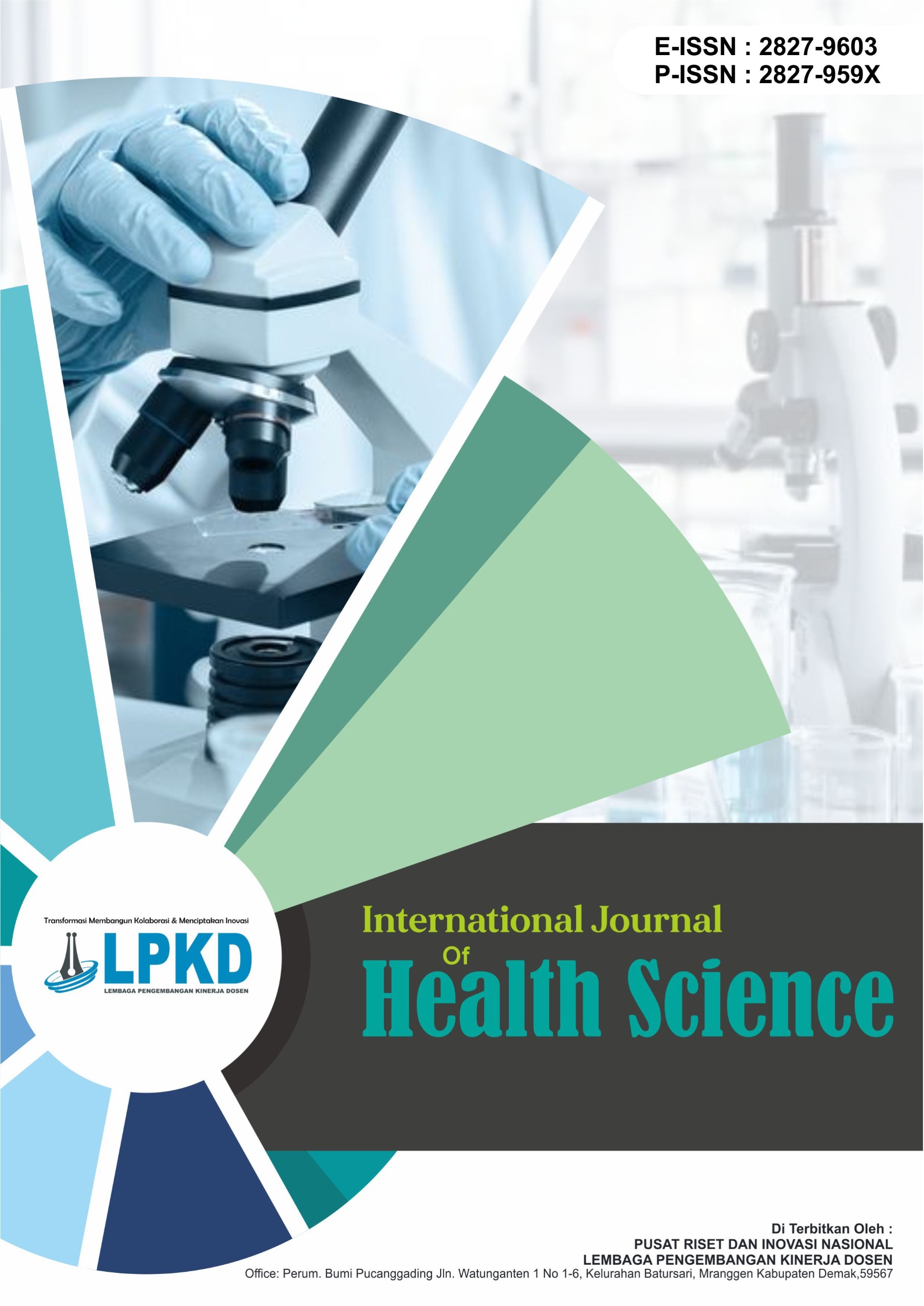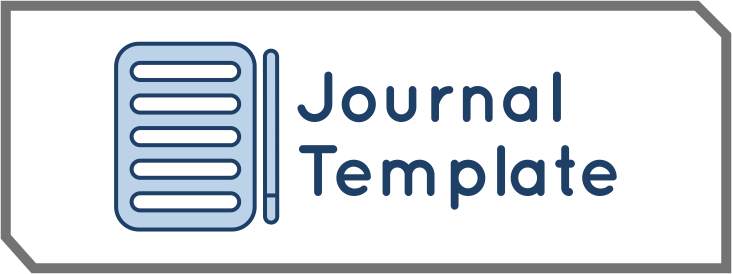The Potential of Complementary Therapy Using Bay Leaves (Syzygium polyanthum) and Ginger (Zingiber officinale) in Lowering Blood Glucose Levels in Patients with Diabetes Mellitus: A Literature Review
DOI:
https://doi.org/10.55606/ijhs.v5i3.6214Keywords:
Bay Leaves, Blood Glucose, Complementary Therapy, Diabetes Mellitus, GingerAbstract
Diabetes mellitus (DM) is a global public health issue, with its prevalence steadily increasing. The 2023 Indonesian Health Survey (SKI) reported that 11.7% of the population aged ≥15 years is affected by DM. DM is marked by high blood glucose levels due to impaired insulin secretion or action, leading to chronic complications. While conventional treatments such as insulin and oral antidiabetic drugs are effective, their long-term use can cause side effects, including hypoglycemia, gastrointestinal issues, and economic burdens. As a result, herbal-based complementary therapies are gaining attention due to their safety, accessibility, and alignment with Indonesian culture. Research suggests that certain herbs can lower blood glucose by increasing insulin secretion, improving insulin sensitivity, inhibiting glucose absorption, and offering antioxidant effects. Herbs like bay leaves (Syzygium polyanthum) and ginger (Zingiber officinale) have shown hypoglycemic activity. This literature review aims to explore the potential, mechanisms, preparation, and clinical evidence of using bay leaves and ginger for glycemic control. Findings indicate that both herbs improve insulin sensitivity, inhibit α-glucosidase, and exhibit antioxidant effects. However, further research, including large-scale clinical trials and multidisciplinary studies, is needed to validate these benefits and explore synergies with conventional therapies.
Downloads
References
ADA. (2022). American Diabetes Association Professional Practice Committee, 2. Classification and diagnosis of diabetes: Standards of medical care in diabetes - 2022. Diabetes Care, 45(Suppl 1), S17–S38. https://doi.org/10.2337/dc22-S002
Adi, G. S., Pratiwi, E., & Permanasari, P. (2023). Efektivitas jahe merah sebagai kontrol gula darah lansia di wilayah Puskesmas Tegalrejo. Jurnal Pengabdian Kesehatan, 6(4), 315–322.
Alfaqih, M., Anugerah, A., & Khayudin, B. (2022). Manajemen penatalaksanaan diabetes mellitus. Bojonegoro: 2022.
Anggraini, N., Riskika, S., Ayu, N., Sibulo, M., Mardiana, Hamka, & Mas'ud, A. (2024). Keperawatan Komplementer. Yogyakarta: Rizmedia Pustaka Indonesia.
Astuti, Y., Fandizal, M., & Khairani. (2022). Pengaruh pemberian air rebusan jahe terhadap penurunan kadar gula darah pada penderita diabetes mellitus di Kelurahan Cililitan Tahun 2021. Jurnal Medika Hutama, 3(2), 2053–2057 (5). https://doi.org/10.57213/nurse.v5i2.119
Dewi, A. (2025). Efektivitas rebusan daun salam terhadap penurunan kadar gula darah pada pasien diabetes melitus: Literature review. 1(2), 76–84.
Drayton, D. J., Birch, R. J., D'Souza-Ferrer, C., Ayres, M., Howell, S. J., & Ajjan, R. A. (2022). Diabetes mellitus and perioperative outcomes: A scoping review of the literature. British Journal of Anaesthesia, 128(5), 817–828. https://doi.org/10.1016/j.bja.2022.02.013
Hairani, M. A. S., Abdul Majid, F. A., Zakaria, N. H., Hudiyanti, D., Fadhlina, A., & Sheikh, H. I. (2023). Anti-diabetic properties of traditional herbal concoction containing Eleutherine palmifolia (L.) Merr., Momordica charantia L., and Syzygium polyanthum (Wight.): A bibliometric analysis. Food Production, Processing and Nutrition, 5(1), 1–24. https://doi.org/10.1186/s43014-023-00172-x
IDF. (2025). IDF Diabetes Atlas 11th Edition (11th ed.). International Diabetes Federation. https://doi.org/10.1111/1753-0407.12644
Irmawati, N. E., Indarti, D., Komsiyah, K., & Marahayu, M. (2022). Pengaruh penerapan rebusan daun salam terhadap kadar gula darah pada penderita diabetes mellitus tipe 2 di Desa Kopek Kecamatan Godong Kabupaten Grobogan. JIIP - Jurnal Ilmiah Ilmu Pendidikan, 5(6), 1945–1955. https://doi.org/10.54371/jiip.v5i6.657
Luthfiani, F., & Setyowati, D. (2023). Penerapan intervensi pemberian jahe merah terhadap kadar glikemik indeks pada lansia dengan diabetes mellitus. Ners Muda, 4(3), 257–264. https://doi.org/10.26714/nm.v4i3.10603
Nasution, P. R. (2022). Uji efektivitas ekstrak etanol daun salam (Syzygium polyanthum) terhadap kadar glukosa darah pada tikus putih jantan yang diinduksi glukosa. Jurnal Sains Medisina, 1(2), 62–69. https://doi.org/10.63004/snsmed.v1i2.147
Noorbaya, S., & Mayangsari, R. (2024). Buku Ajar Asuhan Kebidanan Komplementer Neonatus, Bayi, Balita, dan Anak Prasekolah. Banyumas: CV Pena Persada.
Novira, P. P., & Febrina, E. (2018). Review artikel: Tinjauan aktivitas farmakologi ekstrak daun salam (Syzygium polyanthum (Wight.) Walp). Farmaka, 6(2), 288–297.
PERKENI. (2024). Pedoman Pengelolaan Dan Pencegahan Diabetes Melitus Tipe 2 Di Indonesia 2024. Perkumpulan Endokrinologi Indonesia.
Safitri, S. W., Frana, I., Kk, J., Herawati, D., Studi, P., Keperawatan, I., Kader, U., Palembang, B., & Serikat, A. (2024). Pengaruh rebusan daun salam (Syzygium polyanthum) terhadap kadar glukosa darah pada pasien diabetes mellitus tipe II. Babul Ilmi Jurnal Ilmiah Multi Science Kesehatan, 16(1), 152–164. https://doi.org/10.36729/bi.v16i1.1215
Schumacher, J. C., Mueller, V., Sousa, C., Peres, K. K., Mata, I. R., Menezes, R. C., & Bosco, S. M. (2024). The effect of oral supplementation of ginger on glycemic control of patients with type 2 diabetes mellitus - A systematic review and meta-analysis. Clinical Nutrition ESPEN, 63, 615–622. https://doi.org/10.1016/j.clnesp.2024.07.011
Septiani, B., Mardhotillah, H., & Tanuwijawa, R. (2025). Buku Ajar Dietetik Penyakit Tidak Menular. Jakarta Barat: PT Nuansa Fajar Cemerlang.
Setiawan, B. B., Tursinawati, Y., Widianingrum, R., & Rahmatullah, D. E. (2025). Analisis pengaruh pemberian ekstrak rimpang jahe (Zingiber officinale Rosc.) terhadap gambaran histolopatologi islet pankreas pada tikus wistar model hiperglikemia: Sebuah studi preklinis. Jurnal Sosial Dan Sains (SOSAINS), 5(9), 7199–7211. https://doi.org/10.59188/jurnalsosains.v5i9.32500
SKI. (2023). Laporan SKI 2023 Dalam Angka. In BKPK Kemenkes.
Syabana, M. A., & et al. (2022). α-glucosidase inhibitors from Syzygium polyanthum (Wight) Walp leaves as revealed by metabolomics and in silico approaches. Journal of Ethnopharmacology, 282. https://doi.org/10.1016/j.jep.2021.114618
Tasalim, N., & Astuti, N. (2021). Terapi Komplementer. Bojonegoro: Guepedia.
WHO. (2019). WHO Global Report on Traditional and Complementary Medicine 2019. America: World Health Organization.
WHO. (2024, November 14). Diabetes (Fact Sheet). Retrieved from World Health Organization: https://www.who.int/news-room/fact-sheets/detail/diabetes
Widodo, A., Sulastri, E., Ihwan, I., Cahyadi, M. H., Maulana, S., & Zubair, M. S. (2024). Antidiabetic activity, phytochemical analysis, and acute oral toxicity test of combined ethanolic extract of Syzygium polyanthum and Muntingia calabura leaves. Scientific World Journal, 2024. https://doi.org/10.1155/2024/3607396
Widyawati, T., Yusoff, N. A., Bello, I., Asmawi, M. Z., & Ahmad, M. (2022). Bioactivity-guided fractionation and identification of antidiabetic compound of Syzygium polyanthum (Wight.)'s leaves extract in streptozotocin-induced diabetic rat model. Molecules, 27(20), 1–15. https://doi.org/10.3390/molecules27206814
Yohana, I. R., & Dewi, W. M. (2024). Manfaat jahe (Zingiber officinale Roscoe) untuk menurunkan kadar gula darah pada penyakit diabetes melitus tipe 2. Watson Journal of Nursing, 2(2), 51–65.
Zhu, J., Chen, H., Song, Z., Wang, X., & Sun, Z. (2018). Effects of ginger (Zingiber officinale Roscoe) on type 2 diabetes mellitus and components of the metabolic syndrome: A systematic review and meta-analysis of randomized controlled trials. Evidence-Based Complementary and Alternative Medicine, 2018. https://doi.org/10.1155/2018/5692962
Downloads
Published
How to Cite
Issue
Section
License
Copyright (c) 2025 International Journal Of Health Science

This work is licensed under a Creative Commons Attribution-ShareAlike 4.0 International License.







